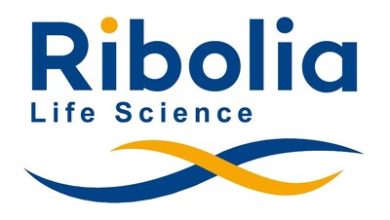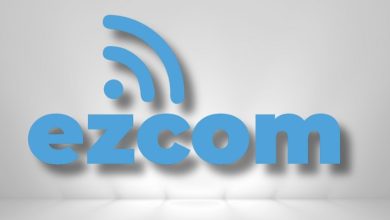The Stage is Yours: Avoiding the Pitfalls That Derail New Speakers and Their Careers
You’ve felt the pull — that compelling urge to share your knowledge, to move an audience, to make a difference from the stage. You’ve crafted your message, and you’re ready to step into the spotlight. And it’s actually easy – modern speaker platforms like https://speak-up.pro/en gives you the chance to find the right event for your start as a speaker in a few days.
But the journey from a passionate expert to a sought-after speaker is a minefield of common, yet avoidable, mistakes. Many new speakers focus solely on their content, forgetting that a successful speaking career is a two-part act: the performance itself and the business of building a platform. Stumble on either, and your impact—and your booking rate—will suffer.
Let’s dissect the top mistakes new speakers make, both on and off the stage, and outline a clear path to success.
Part 1: On-Stage Errors – When the Performance Falters
The moment of truth. The house lights dim, and all eyes are on you. This is where the foundation of your reputation is laid, brick by brick. Avoid these critical performance pitfalls.
Mistake #1: The Data Dump
This is the most common error of the novice expert. They feel the need to prove their worth by unloading every piece of data, every statistic, and every nuanced detail of their knowledge. The result? A cognitively overwhelmed, disengaged audience.
The Fix: Story-Driven Structure. Data validates, but the story resonates. Structure your talk around a central narrative. Use a personal anecdote, a client case study, or a compelling metaphor as your spine. Weave your data points into this story to support your claims, not as the main event. Your goal is not to inform, but to transform, and transformation happens through emotional connection.
Mistake #2: Reading the Slides Verbatim
Your slides are a visual aid, not a teleprompter. Turning your back to the audience to read bullet points they can read for themselves is a cardinal sin. It signals a lack of preparation and kills any semblance of connection.
The Fix: The Bumper Slide Technique. Design your slides to be minimalist and image-heavy. Each slide should represent a single idea or concept—a “bumper” on the highway of your talk. You are the content; the slides are merely the scenery. This forces you to speak authentically to the audience, using the slides as cues rather than a crutch.
Mistake #3: Ignoring the Power of Non-Verbals
Your words are only part of the message. A slumped posture, hands stuffed in pockets, a monotonous tone, and a failure to make eye contact can undermine the most brilliant script. The audience subconsciously reads this as a lack of confidence or passion.
The Fix: Conscious Practice. Rehearse not just your words, but your movements. Record yourself on video. Practice in front of a mirror or a trusted friend. Work on opening your posture, using deliberate gestures to emphasize points, and varying your vocal pace and pitch. Most importantly, practice making sustained eye contact with individuals across the room, creating a series of mini-conversations.
Mistake #4: Failing to “Read the Room”
A rigidly delivered, pre-packaged talk that doesn’t adapt to the audience’s energy is a missed opportunity. If the audience looks confused, bored, or energized by a particular point, a skilled speaker adjusts in real-time.
The Fix: Build in Flexibility and Interaction. Start with a question to gauge the audience. Have a few optional anecdotes or examples ready to deploy. If you sense confusion, pause and ask, “Is that clear?” or “Let me rephrase that.” This agility shows you are present and genuinely care about their understanding.
Part 2: Off-Stage Errors – The Hidden Ceiling on Your Career
You can deliver a world-class talk, but if no one can find you or understand your value, the phone won’t ring. Your off-stage presence is your commercial.
Mistake #1: The Sparse or Vague Profile
A LinkedIn profile with the headline “Speaker” and a bio that says “I speak about leadership and motivation” is a career killer. Event organizers are not just booking a topic; they are hiring a unique perspective and a proven expert.
Moreover, they rarely search on social media. Use the specific speaker platform to be seen. These apps usually have a more advanced speaker profile, where you can place all the information that could be interesting for the organizers that hire experts.
The Fix: Specificity is Currency. Your profile must answer three questions instantly:
- Who do you help? (e.g., “I help tech startups scale their teams without burning out culture.”)
- What specific problem do you solve? (e.g., “…by teaching them the ‘Psychological Safety Playbook’.”)
- What is your unique proof? (e.g., “Drawn from my 15 years as a COO in the Silicon Valley.”)
Mistake #2: The Invisible Reel (or Poor Quality Video)
In the speaking world, you are only as good as your worst video. Event organizers will not take a chance on an unproven speaker without seeing them in action. A shaky phone video from the back of a half-empty room, with poor audio, does more harm than good.
The Fix: Invest in Your Sizzle Reel. You don’t need a Hollywood budget, but you do need quality. Get a clean, well-edited 2-3 minute video that showcases your best moments: your powerful opening, a compelling story, audience reaction, and your strong closing. Good audio is non-negotiable. This is your single most important marketing asset.
Mistake #3: Transactional Networking
Many new speakers treat networking as collecting business cards or sending cold, templated emails. This “me-focused” approach is instantly off-putting.
The Fix: The Generous Connector. Shift your mindset from “What can I get?” to “Who can I help?” Engage with other speakers and event organizers on social media by sharing their content and adding valuable comments. Introduce connections who could benefit from knowing each other. When you become a hub of value, people are naturally drawn to you, and opportunities begin to flow.
How a Speaker Platform Can Be Your Strategic Accelerator
Navigating these challenges alone is daunting. This is where a dedicated speaker search platform or marketplace becomes an invaluable partner, acting as both your agent and your academy.
- The Compelling, Guided Profile: A robust platform won’t let you get away with a sparse profile. It guides you to fill out detailed sections on your expertise, past events, client testimonials, and, most importantly, your unique speaking topics. It structures your value proposition in a way that is easily searchable and digestible for event organizers.
- The Centralized Media Hub: Your profile becomes your professional portfolio. You can upload your high-quality sizzle reel, link to full-length presentations, and showcase testimonials and photos from past engagements. This builds immediate trust and credibility, giving organizers the confidence to book you.
- Advanced Search and Discovery: Instead of hoping an organizer stumbles upon your website, you are placed in a curated directory where they are actively searching for talent. Advanced filters allow them to find you by industry, topic, geographic location, and speaking fee. You are no longer a needle in a haystack; you are a solution in a catalog.
- The Growth Marketplace: The best platforms understand that speakers need to continuously improve. They often feature a “growth marketplace” or resource section with access to coaching, courses on speechwriting and stage presence, and webinars on the business of speaking. This allows you to systematically address your weaknesses and invest in your long-term growth.
- Streamlined Logistics: From managing booking requests and contracts to handling invoicing, a platform reduces the administrative overhead that bogs down so many new speakers, allowing you to focus on what you do best: preparing and delivering transformative talks.
The stage is a privilege, and a speaking career is built on more than just a good idea. By mastering the dual arts of compelling performance and strategic visibility, and by leveraging the right platforms to amplify your reach, you can avoid the common pitfalls. You can ensure your message doesn’t just echo in an empty room, but resonates in the hearts and minds of audiences, and on the desks of eager event organizers.


